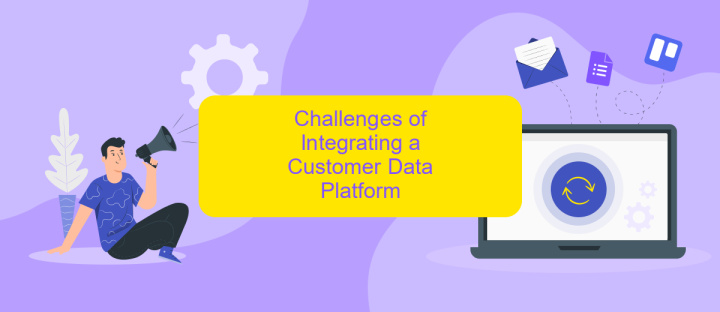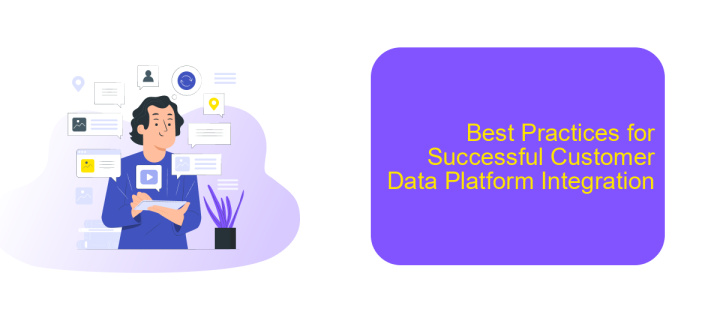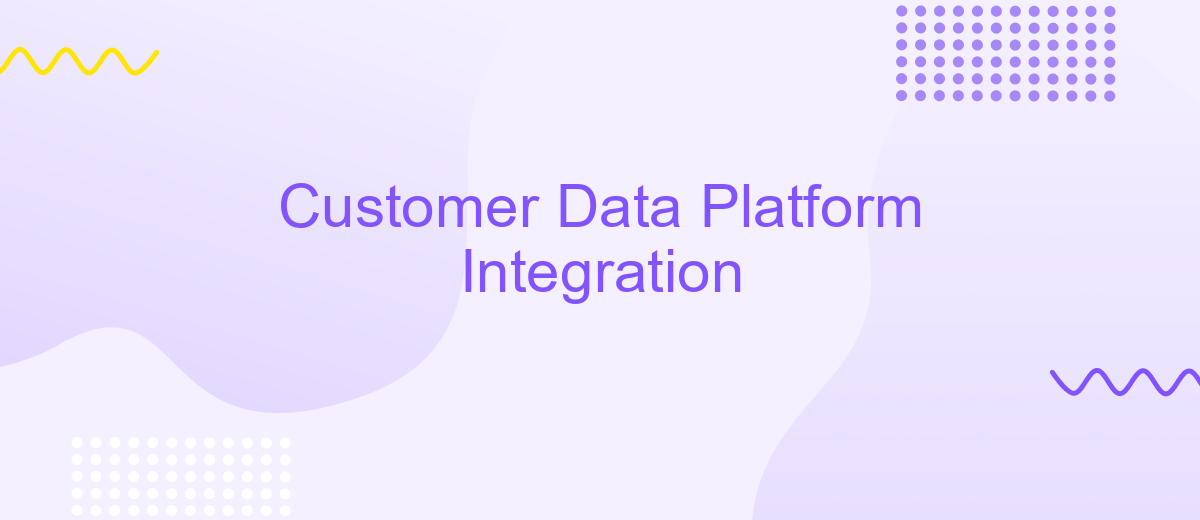Customer Data Platform Integration
Integrating a Customer Data Platform (CDP) is pivotal for businesses aiming to enhance their customer engagement and streamline marketing efforts. By consolidating data from various sources into a unified platform, companies can gain valuable insights, personalize customer experiences, and drive more effective marketing strategies. This article explores the key benefits and strategies for successful CDP integration in today's competitive landscape.
Introduction
In today's rapidly evolving digital landscape, businesses are increasingly relying on Customer Data Platforms (CDPs) to streamline data management and enhance customer experiences. Integrating a CDP can significantly improve how companies collect, analyze, and utilize customer data, leading to more personalized marketing strategies and better customer engagement.
- Centralized data management
- Enhanced customer insights
- Improved marketing strategies
- Seamless integration with existing systems
One of the key challenges in implementing a CDP is ensuring seamless integration with various data sources and marketing tools. Services like ApiX-Drive simplify this process by offering automated data transfer between platforms, reducing the need for manual intervention and minimizing errors. By leveraging such services, businesses can focus on deriving actionable insights from their data rather than getting bogged down by technical complexities.
Benefits of Integrating a Customer Data Platform

Integrating a Customer Data Platform (CDP) offers numerous benefits that can significantly enhance business operations. One of the primary advantages is the ability to consolidate customer data from various sources into a single, unified view. This comprehensive perspective allows businesses to gain deeper insights into customer behavior, preferences, and trends, thereby enabling more personalized and effective marketing strategies. Additionally, a CDP can streamline data management processes, reducing the time and effort required to gather, clean, and analyze data, which ultimately leads to more efficient decision-making.
Another key benefit of CDP integration is improved customer experience. By leveraging the unified data, businesses can create more targeted and relevant interactions with their customers across multiple channels. This not only boosts customer satisfaction but also fosters loyalty and retention. Tools like ApiX-Drive can further enhance the integration process by automating data transfers between various platforms and applications, ensuring seamless and accurate data flow. This automation minimizes the risk of errors and ensures that all customer data is up-to-date, providing a solid foundation for data-driven strategies.
Challenges of Integrating a Customer Data Platform

Integrating a Customer Data Platform (CDP) can present numerous challenges for businesses. These challenges often stem from the complexity of unifying data from various sources, ensuring data quality, and maintaining compliance with data privacy regulations.
- Data Silos: Different departments may store customer data in separate systems, making it difficult to create a unified view.
- Data Quality: Inconsistent or incomplete data can hinder the effectiveness of the CDP, requiring significant effort to clean and standardize.
- Compliance: Adhering to data privacy laws such as GDPR and CCPA is essential but can be complex and time-consuming.
- Integration Complexity: Connecting various data sources and ensuring seamless integration can be technically challenging.
To mitigate these challenges, businesses can leverage integration services like ApiX-Drive, which simplifies the process of connecting different data sources. By automating data transfer and synchronization, ApiX-Drive helps ensure data consistency and quality, making it easier to maintain a comprehensive and compliant customer data platform.
Best Practices for Successful Customer Data Platform Integration

Integrating a Customer Data Platform (CDP) is a crucial step for businesses aiming to enhance customer engagement and streamline data management. Successful integration requires careful planning and execution to ensure that all data sources are accurately connected and that the platform operates efficiently.
First, it is essential to identify the key data sources and systems that will be integrated with the CDP. This includes CRM systems, marketing automation tools, and e-commerce platforms. Ensuring these systems are compatible and can seamlessly share data is vital for a smooth integration process.
- Define clear objectives and goals for the CDP integration.
- Choose a scalable and flexible CDP that meets your business needs.
- Ensure data accuracy and consistency across all integrated systems.
- Utilize integration tools like ApiX-Drive to automate data transfer and synchronization.
- Regularly monitor and optimize the integration process for continuous improvement.
By following these best practices, businesses can achieve a seamless CDP integration, leading to better data insights and improved customer experiences. Leveraging tools like ApiX-Drive can significantly simplify the integration process, ensuring that data flows smoothly between various systems and the CDP.
Conclusion
The integration of a Customer Data Platform (CDP) is essential for businesses aiming to unify and optimize their customer interactions. By consolidating data from various sources, a CDP provides a comprehensive view of the customer, enabling personalized marketing strategies and enhancing customer experience. Effective integration not only streamlines operations but also ensures that data is accurate and up-to-date, which is crucial for making informed business decisions.
Utilizing services like ApiX-Drive can significantly simplify the integration process. ApiX-Drive offers a user-friendly platform that connects various marketing tools and data sources, automating the data flow into your CDP. This reduces the complexity and time required for setup, allowing businesses to focus more on leveraging their data for strategic initiatives. In conclusion, integrating a CDP with the help of reliable services like ApiX-Drive can drive operational efficiency and foster deeper customer relationships, ultimately leading to increased business growth and success.
FAQ
What is a Customer Data Platform (CDP)?
How does a CDP differ from a CRM?
What are the key benefits of integrating a CDP?
How can I integrate a CDP with my existing systems?
What challenges might I face during CDP integration?
Strive to take your business to the next level, achieve your goals faster and more efficiently? Apix-Drive is your reliable assistant for these tasks. An online service and application connector will help you automate key business processes and get rid of the routine. You and your employees will free up time for important core tasks. Try Apix-Drive features for free to see the effectiveness of the online connector for yourself.

